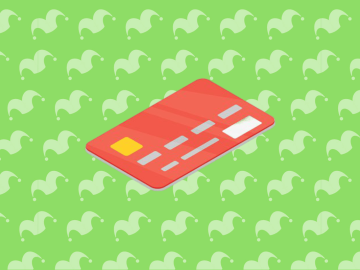
Many Americans are feeling financially stressed these days, struggling to cope with elevated prices on various goods and services. A big part of this unease reflects a lack of cushion in the form of emergency savings.
There isn’t a hard definition of how much savings you should have to meet unexpected expenses. Much depends on the stability of your job, your inclination to pick up a side gig, how much debt you have, what assets you could sell in a pinch, and so on.
Jane Ceasor of Ceasor Insurance Consultants in Scottsdale said the traditional rule of thumb has been to accumulate enough of a cushion to meet six months of expenses, but she now considers eight or more months a more prudent gauge, to meet the rising cost of medical emergencies, surprise tax bills and other obligations.
Savings at the pump:Here’s how to get Amazon Prime’s gas discount
How to hold emergency funds
You should have a small stash of currency that you can grab in a pinch, as if you faced an imminent evacuation, but you don’t want to hold too much cash that isn’t earning interest. You might prefer to keep your emergency funds in a checking or other bank savings account, in money-market mutual funds or other interest-bearing instruments.
Maximize your savings: Best high-yield savings accounts
However you hold the money, Steven Conners of Conners Wealth Management in Scottsdale suggests labeling the account for emergencies only so that you’re less tempted to dip into it for routine expenses.
In guiding people who suffered losses from Hurricanes Helene or Milton, the American Institute of CPAs pointed to other ways to access money in a pinch. These include lines of credit, cashing out an insurance policy, or pulling money from a 401(k) or other retirement plan.
But there are caveats with these choices.
For example, permanent withdrawals from a retirement plan likely will trigger taxes and possibly early withdrawal penalties, though many retirement plans allow you to borrow money with no tax consequences, provided you repay the money on time. As a general rule, you might be able to borrow up to 50% of the value of your retirement plan or $50,000, said the AICPA.
What’s holding people back
Most Americans say they’re behind in building up emergency savings, with 62% saying they don’t feel they have enough, according to a mid-September survey of roughly 2,500 people by Bankrate.com. Only 23% said they’re on track, and a mere 15% feel they’re ahead. Of the respondents, 17% said they have no emergency savings.
Bankrate didn’t advise respondents as to how much savings was wise or appropriate.
Among respondents who haven’t added to their savings this year, 53% cited high prices or inflation as the main impediment, 43% said they have too many expenses, and 24% cited too much debt. Other common obstacles included a change in employment or income (18%), a large unexpected expense (15%) and high interest rates/borrowing costs (13%).
You might prefer to set emergency savings as a New Year’s resolution, but it’s better to get started now before holiday-spending distractions arrive. “Even if it’s just $20 a month or whatever the amount, do it,” Conners advised.
How to get on track
It might help to view saving for emergencies as one more item on your list of regular monthly expenditures. “Paying yourself first is a proven way to save,” said Greg McBride, Bankrate’s chief financial analyst. Otherwise, he said, you might find that there’s “nothing left over once the bills have been paid.”
He suggests having money from your paycheck transferred automatically to a dedicated savings account.
Part of the savings-accumulation process involves drawing up a budget so you can identify expenses that could be cut. Don’t forget to include insurance premiums, property taxes or other big bills you might not pay every month.
“It’s really important to know where the money’s going,” said Conners. Part of the exercise, he said, involves differentiating between needs and wants, necessities and luxuries.
Ceasor suggests looking to trim recurring monthly expenses that might not be needed, subscriptions, and other items that people “often forget are coming out of their checking accounts.” Other steps can be as simple as replacing a lunch out each week with one you prepare at home.
The solution to building an emergency fund “often starts with an awareness of the (budgeting) problem,” she said.
Budgeting also might involve investigating ways to add to your income. Possibilities range from freelance work to part-time jobs as a tutor, a delivery driver, a house sitter, a dog walker or something else.Many of these positions become more plentiful around the holidays.
What else you can do
As emergency funds are designed for emergencies, heeding other precautions can help offset the risks of a burglary, fire or other calamity.
For instance, the AICPA suggests creating an inventory of your home furnishings, appliances, vehicles, and other personal belongings with their current values and updating the list occasionally. This might prove helpful if you decide to sell some belongings, and it would be valuable if you must file insurance claims.
It’s also wise to make a list of your financial accounts, along with updated user names and passwords, in case your cellphone or computer gets lost, stolen or damaged.
Another smart move: Obtain a copy of your credit report periodically to see which loans and obligations are under your name; the list might be longer than you think, and it might contain errors. You are entitled to one free credit report each year from each of the three main credit bureaus through annualcreditreport.com.
Creating an emergency fund isn’t all that intellectually challenging, but it does take resolve and discipline.
“I see it all the time,” said Conners. “A lot of people don’t think having (emerging savings) is as important as it is.”
Reach the writer at russ.wiles@arizonarepublic.com.





